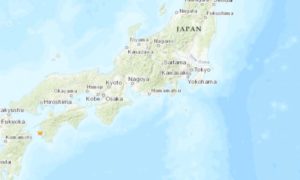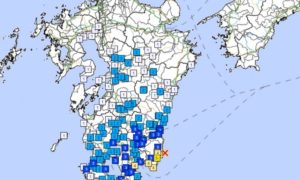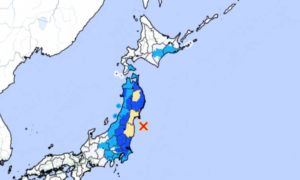Why did Japan’s fifth and largest wave of the coronavirus pandemic, driven by the delta variant, suddenly come to an unexpected end following a seemingly relentless increase in new infections? And what made Japan different from other developed nations that are now seeing a fresh surge in new cases?
New research out of Japan’s National Institute of Genetics implies the strain drove itself towards a “natural extinction” thereafter several mutations led to it being unable to make copies of itself.
Japan was reporting approximately 26,000, new COVID-19 infections, but in November the country started to record cases below 200, the first time that had happened in about 15 months.
According to a “potentially revolutionary” theory put forward by Professor Ituro Inoue, a genetics expert, the Delta variant simply accumulated too many mutations to the virus’s error-correcting protein called nsp14.
Prof Inoue tells the virus struggled to repair the errors in time and ultimately caused its own “self-destruction”.
“We were literally shocked to see the findings,” Inoue told The Japan Times.
So the researchers from the National Institute of Genetics and Niigata University set out to learn how the APOBEC3A protein affects the nsp14 protein and whether it can repress the activity of the coronavirus. The team conducted an analysis of the genetic diversity data for the alpha and delta variants from infected clinical specimens in Japan from June to October.
They then visualized the relationships among the DNA sequences of the SARS-CoV-2 virus to show genetic diversity in a diagram called a haplotype network. In general, the bigger the network is, the more positive cases it represents.
When the Delta variant first appeared, the US Centres for Disease Control and Prevention reported it to be more than twice as contagious as previous variants, warning it could cause more severe illness in unvaccinated people.
Surprisingly, they found the opposite to be true.
“The delta variant in Japan was highly transmissible and kept other variants out. But as the mutations piled up, we believe it eventually became a faulty virus and it was unable to make copies of itself. Considering that the cases haven’t been increasing, we think that at some point during such mutations it headed straight toward its natural extinction,”Inoue adds
“If the virus were alive and well, cases for sure would increase as masking and vaccination do not prevent breakthrough infections in some cases,” Inoue said.
According to Takeshi Urano, a professor at Shimane University’s Faculty of Medicine who was not involved in the research led by Inoue.
“Nsp14 works with other virus proteins and has a critical function to protect the virus RNA from breaking apart,” he said when asked about Inoue’s findings. “Studies have shown that a virus with a crippled nsp14 has a significantly reduced ability to replicate, so this can be one factor behind the rapid decline in new cases. The nsp14 is virus-derived, and the chemical agent to curb this protein could become a promising medicine, with development already underway.”
Japan seems to be an anomaly in that the delta variant was virtually shutting out alpha and other variants by late August. On the other hand, other countries — including India and Indonesia, both of which were hit particularly hard by the delta variant — have reported a mix of alpha and delta strains among cases.
A similar natural extinction of the coronavirus could possibly be observed overseas, Inoue states, adding that detecting that would be difficult as no other country seems to have accumulated as many mutations in the virus’s nsp14 as in Japan, though similar mutations at the A394V site have been discovered in at least 24 countries. But Inoue’s theory may also help explain why the outbreak of severe acute respiratory syndrome (SARS) ended abruptly in i2003. An in vitro experiment in which the researchers caused mutations in nsp14 in the virus that causes SARS led to findings that the virus eventually could not replicate itself as mutations piled up.
“No genome data exists, so it’s just a hypothesis, but because it has disappeared, it will never see the light of day again,” he said.
So what are the chances that we could see a similar natural extinction overseas of the COVID-19-causing SARS-CoV-2 virus?
“The chances are not zero, but that seems too optimistic for now as we’re unable to get hold of any such evidence, though we have looked at various data of other countries,” he said.“There’s clearly a threat,” he said. “We have been all right because there was a delta variant. Other variants sneaked in little by little but Japan’s delta was keeping them away. But because there’s nothing now to keep them at bay, there’s room for new ones to enter as the vaccines alone would not solve the problem. In that sense, I think the quarantine measures for immigration control are very important because we never know what comes in from foreign countries.”
Some people may wonder if the self-extinction of the delta variant in Japan was caused by something special in the genetic make-up of Japanese people, but Inoue disagrees.
“I don’t think so,” he said. “People in East Asia, such as Koreans, are ethnically the same as Japanese. But I don’t know why this observation was made in Japan.”
Inoue said that the team of researchers at the National Institute of Genetics and Niigata University plan to arrange a study on their findings by the end of November.
What's happening in Tunisia?
Subscribe to our Youtube channel for updates.

















































